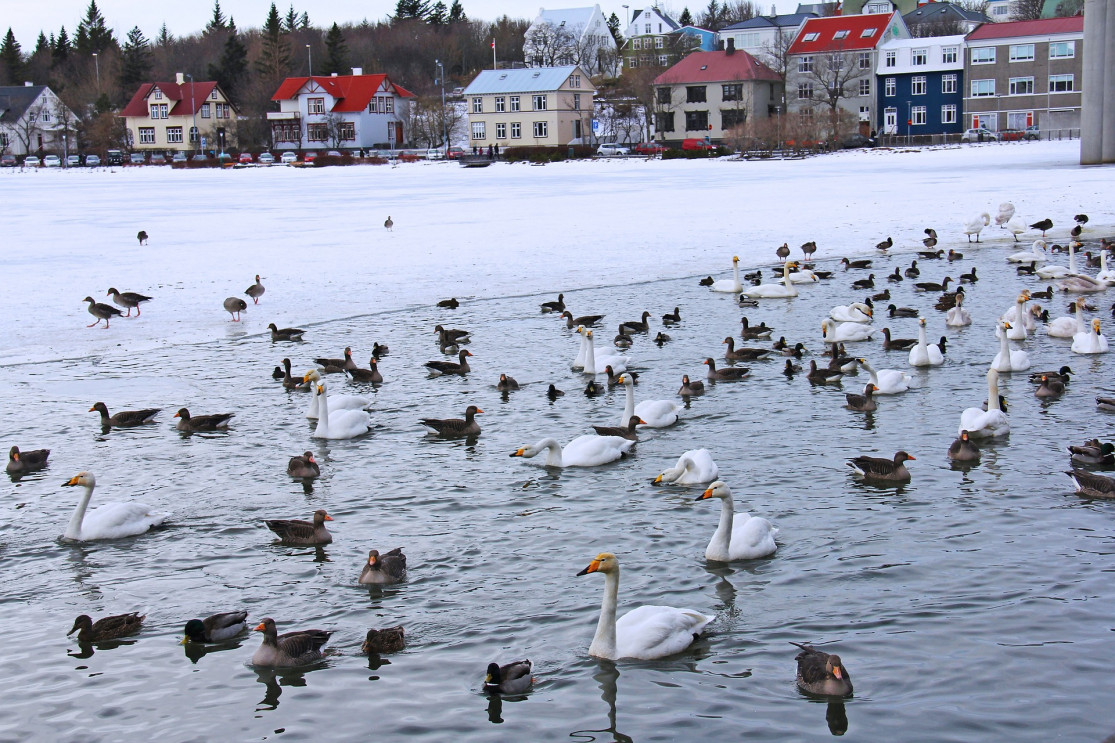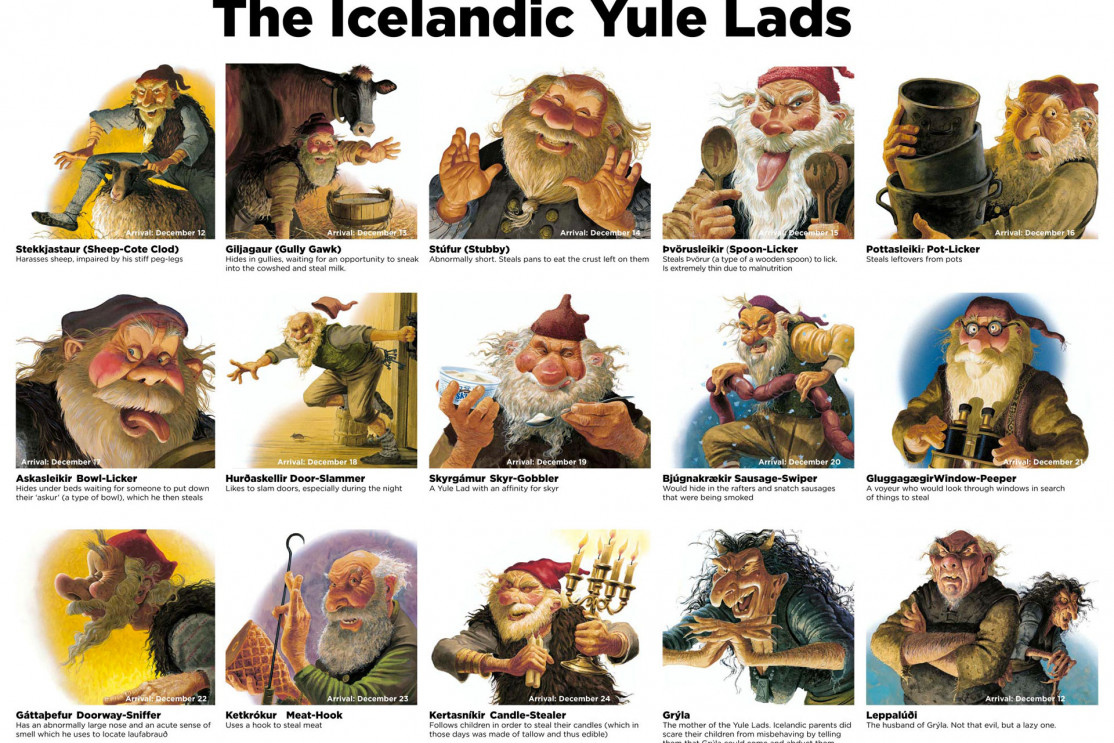Christmas in Iceland
Christmas is called “Jól” or “Yul” in Icelandic and it is a major tradition for Icelanders. Historically, Christmas was celebrated on the shortest day of the year in Iceland, December 21st.
Around the year 1000, the local Christmas day aligned with the international calendar. Danish and American influences blended with local traditions have made the local holiday what it is today.
Christmas decorations are inspired by Danish culture. For example, traditionally, there are not one but 13 Christmas elves in Iceland! American influence has brought the the Santa Claus we know throughout most of the world to become a part of Iceland's customs, though traditional Icelandic Santas make their appearance sometimes.
Visiting Iceland at Christmas

December is the time of year with the lowest amount of sunshine in Iceland (See sunrise and sunset hours).
However, many tourists go to Iceland for Christmas for the arctic scenery. Iceland under sparkling snow and ice is of course a main attraction, but it's also a chance to see the northern lights, as they are visible mostly at this time of year.
The season is not really that much cheaper than the summer period when it comes to housing, vehicle rentals, and restaurants. While prices drop overall from September to early December, they ramp up again of the end-of-year holidays, this period being quite popular with tourists.
Christmas traditions in Iceland

In the weeks leading up to the big day, from December 12, Icelanders love to snack on a particular Christmas cookies. The Sara cookie, a Danish delicacy, is a kind of almond macaroon filled with chocolate cream. So cookies are everywhere, of course, but also gingerbread and licorice sweets and much more...
Christmas isn't just on December 25 in Iceland. The celebrations start with the Þorláksmessa on December 23. Thorláksmessa is the last ditch run to buy the gifts, a special day when most shops are open until midnight. There are many Icelanders on the streets of the city center to create a bustling and celebratory atmosphere.
On December 24, Christmas Eve starts exactly at 6PM when the meal starts. Often, many traditional dishes are served such as:
- Hangikjöt (smoked lamb)
- The Hamborgahryggur (pork)
- Snow partridge
- Reindeer
- Roast turkey
- Almond rice pudding
- Lobster
- Gravalax salmon
- Coca-Cola glazed pork roast
- Lobster soup
Gifts are then opened at the end of the meal. Icelanders love reading so you can often find lots of books there. Then it's time for midnight mass for believers.
The next day, December 25, there is a traditional dish: the famous Hangikjöt, excellent pieces of sliced smoked lamb served with white sauce. The afternoon is typically spent relaxing with the family until the evening.
December 26 is the “second day of Christmas” and Icelanders celebrate it as much as the 25th until the evening when they go out with family or friends.
Iceland's 13 Christmas elves

So Icelanders have their own Christmas tradition of the 13 Christmas elves: “Jólasveinar”. In the legend, Grýla and Leppalúði, who live in the highlands, had 13 children who became the 13 mischievous elves.
They are responsible for filling the Christmas socks hanging off window sills of all the "good" children.
It all starts on December 12 (13 days before Christmas):
- Stekkjarstaur (Sheep-Cote Clod): He harasses sheep but is impaired by his stiff peg legs.
- Giljagaur (Gully Gawk): He hides in gullies, waiting for an opportunity to steal milk from cows.
- Stúfur (Stubby): He is tiny and steals pans to eat any crust left behind.
- Þvörusleikir (Spoon-Licker): He licks wooden spoons and is extremely thin due to malnutrition.
- Pottasleikir (Pot-Licker): He steals leftovers from pots and pans.
- Askasleikir (Bowl-Licker): He hides under beds to steal bowls of food.
- Hurðaskellir (Door-Slammer): He loves to slam doors, keeping people awake at night.
- Skyrgámur (Skyr-Gobbler): He has an insatiable appetite for Skyr (an Icelandic dairy product).
- Bjúgnakrækir (Sausage-Swiper): He snatches sausages, often hanging from rafters to dry.
- Gluggagægir (Window-Peeper): He peers through windows to spot any toys he can steal.
- Gáttaþefur (Doorway-Sniffer): He has a keen sense of smell to find cakes and treats.
- Ketkrókur (Meat-Hook): He uses a hook to steal meat, especially during the winter holidays.
- Kertasníkir (Candle-Stealer): He follows children to steal their candles, leaving them in the dark.
These prankster goblins count the days to Christmas for the merriment of all, old and young.
Gleðileg jól! (Merry Christmas)